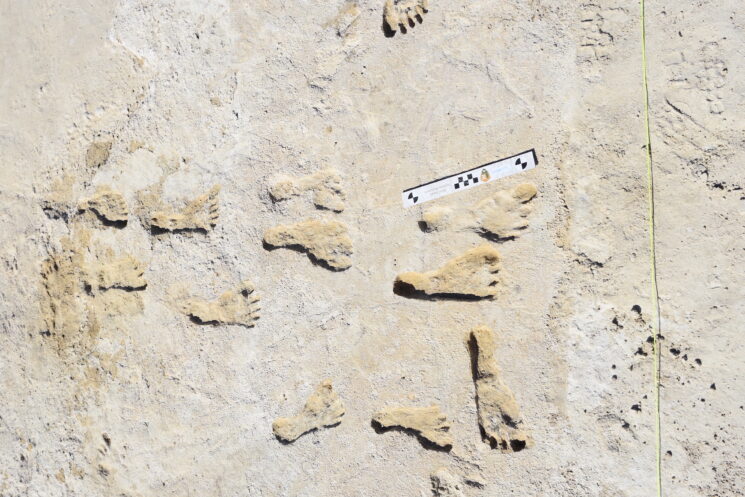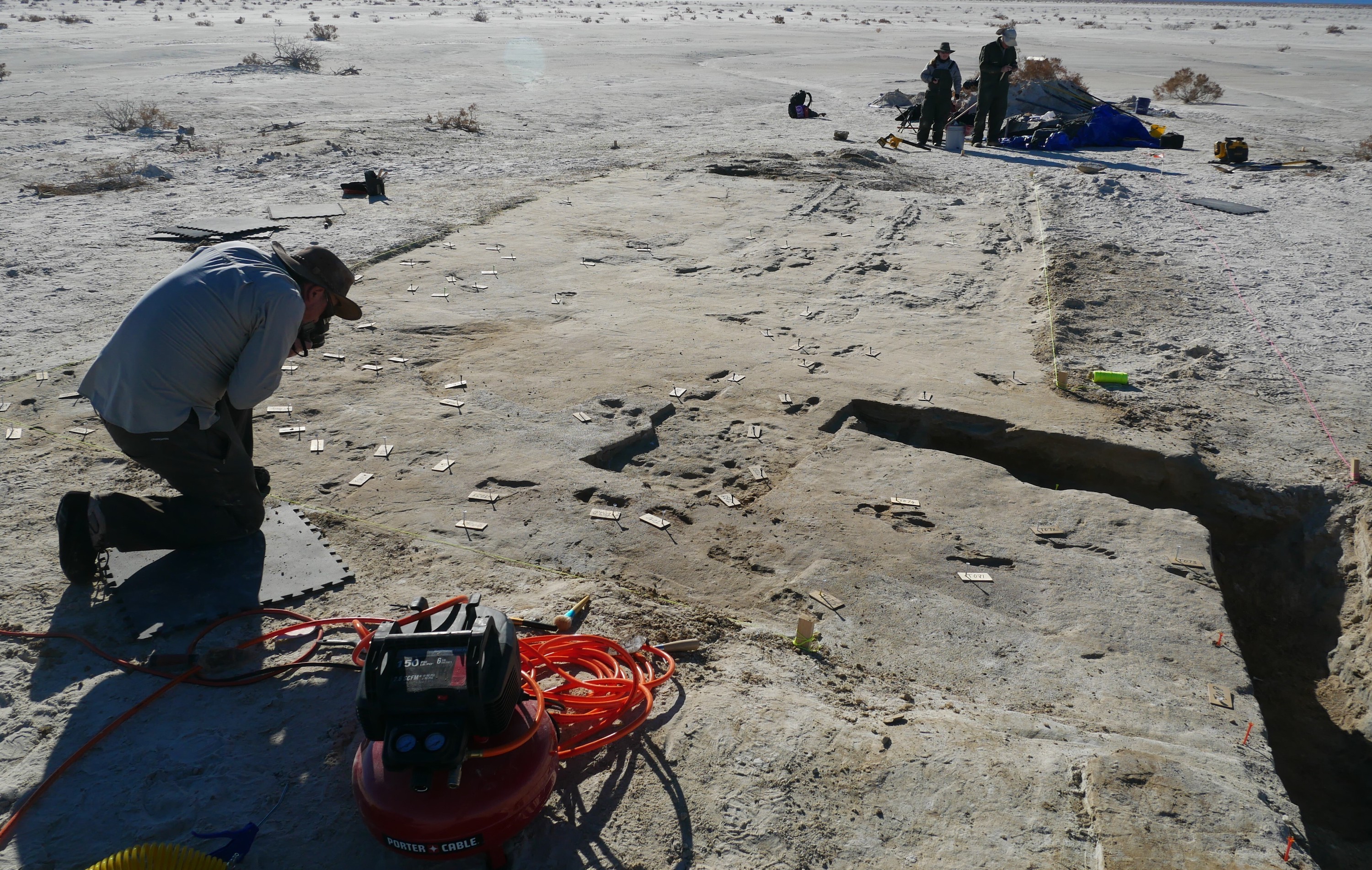
By Caroline Mora
For the last three years, geologists in White Sands National Park in New Mexico have been excavating the fossilized footprints of humans from approximately 23,500 years ago. A new study recently confirmed the age of the footprints, meaning that they predate the estimated time of arrival of humans by at least 10,000 years.
Previous studies of fossils and artifacts put our migration into the continent anywhere between 13,000 and 20,000 years ago. However, the facts don’t lie; discovering evidence like this is key to understanding our history.
White Sands National Park has been the site of many found fossils, but this site was selected for excavation because there were human footprints.
Kathleen Springer, one of the geologists involved in this discovery, sheds a little light on what the climate would have been like during the Pleistocene era.
During the late Pleistocene era, the North American continent would have been experiencing a Dansgaard-Oeschger event.
“A Dansgaard-Oeschger event is essentially a centuries-long megadrought,” Springer said.
These droughts are abrupt and can destroy entire ecosystems because they span for such long periods of time.
Although, as some plants and animals go extinct, others adapt to their environment. The land would have actually been green and lush, feeding off the nutrients from the lake that was present. Megafauna like ground sloths, Columbian mammoths, dire wolves, ancient camels and saber-toothed tigers would have prowled alongside the lake shore. Fossilized footprints and bones of many animals have been found in the Tularosa Basin, and now, humans can be added to that list.
The coexistence of these megafauna and humans raises a few questions. Could humans have played a part in the extinction of wildlife and megafauna in the region?
“It opens that line of inquiry, for sure,” Springer said. “If one line of prevailing thought is that humans entered North America ~13,000 years ago and contributed to the demise of the megafauna, then this new study which the dates of human presence 23,000 to 21,000 years ago does really force us to confront the idea of the coexistence of humans and megafauna for a long time.”

In contrast, humans could have lived off the animals and the land for a while, and then the changing climate could have ultimately been the kicker for some animals. However, there are a few who have attempted to disprove and dispute the findings of this excavation.
Other prominent researchers suggested the sample that was radiocarbon dated gave an inaccurate result because they didn’t test the footprint alone, but included fossilized seeds from an aquatic plant. Radiocarbon dating is a method used to determine the age of organic matter depending on the amounts of carbon isotopes in the sample.
“The hard-water effect” would have left old carbon in the seeds, making the test results appear way older than they are. However, after extensive testing on the seeds, the footprints and the ground in the area concluded that there was no residual ancient carbon in the samples, and therefore, the original results are accurate.
“We stand by our really careful methodologies and the multiple lines of evidence we’ve developed. Ultimately, some may never accept the findings, but in the process of science, the data ultimately tells us what is correct,” Springer said.
It’s hypothesized that the footprints are those of young adults and children. Springer’s team believes that the community that inhabited the White Sands region had the teenagers and children do the gathering, based on the indicated walking speed of the footprints. The adults likely hunted and stayed at their camp to do activities that required more skill.
“Seeing human footprints, little children [and] teenagers all on the same surface is surreal and awe-inspiring. We never get over that feeling of seeing a snapshot in time, literally a frozen scene of people going about their day a long, long time ago,” Springer said.
Springer is excited to continue to excavate and research at White Sands National Park and cannot wait to see what else she and her team will be able to discover.
“We are absolutely still working at White Sands, discovering new things and going to other sites within the park,” Springer said. “It is amazing what we are able to discover, and this recent paper is the latest chapter in the story of White Sands, so stay tuned!”
If you would like to read more about this discovery you can visit Science or The US Geological Survey for more information.





